“We’re Not Deaf Actors — We’re Actors, Period”: ‘CODA’’s Watershed Moment in Representation
By Mia Galuppo | The Hollywood Reporter, August 4, 2021
The indie film that broke all records with its $25 million Sundance sale is next-level inclusive, says its Oscar-winning star Marlee Matlin: “To have a hearing actor put on a deaf character as if it was a costume — we’ve moved beyond that point now.”
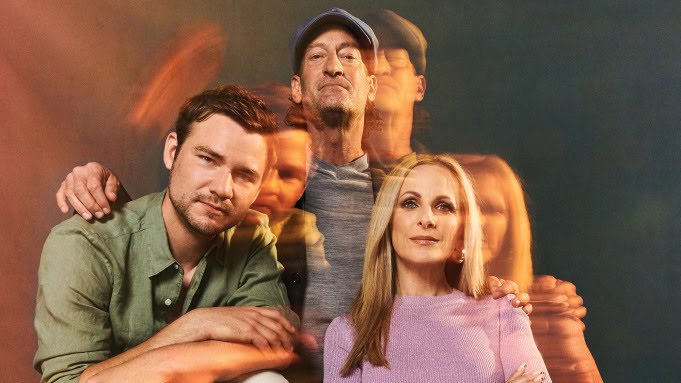
After theaters had reopened following a year-and-a-half blackout, Marlee Matlin returned to the multiplex to watch Disney’s Cruella with her family. Shortly after the film started, she could tell something was wrong.
Matlin knew music was a big part of the movie — an ’80s-inspired punk take on the classic Disney villain — and she could tell that there were songs playing under star Emma Stone’s onscreen kidnapping of dalmatians, but the songs’ lyrics were not showing up in her caption glasses: wearable tech that theaters provide to deaf and hard-of-hearing customers that overlay subtitles on a movie. Matlin turned to her husband, Kevin Grandalski, who is hearing, asking, ” ‘Honey, are there lyrics that you hear? And he goes, ‘Yeah.’ ” She continues, “I found out after the fact that studios stopped subtitling lyrics.”
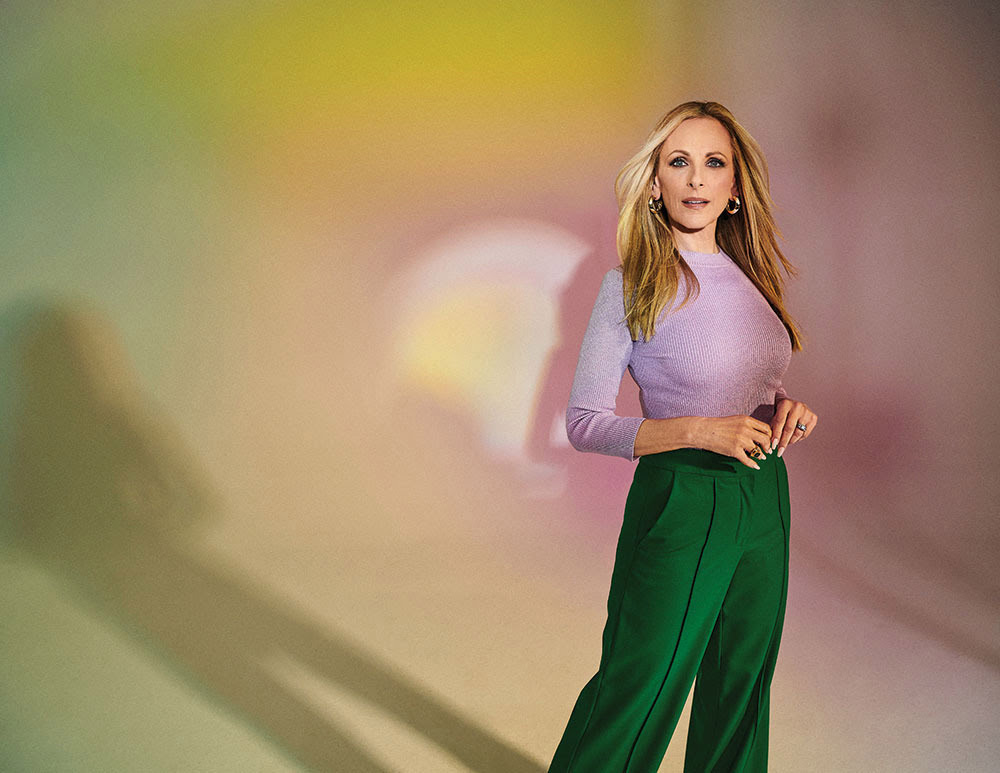
CODA, which stands for Children of Deaf Adults, follows the Rossis, a blue-collar fishing family in Gloucester, Massachusetts, as their hearing daughter (played by Emilia Jones), who also acts as the family interpreter, is considering college. Based on the 2014 French film La Famille Bélier, the project originally was set up at Lionsgate, where writer-director Sian Heder — fresh off her 2016 Sundance feature Tallulah — pitched for it, beating out two other finalists upon being hired to adapt it.
“At the time, I said to myself there is the potential to do a smart remake,” says Patrick Wachsberger, then Lionsgate’s Motion Picture Group co-chairman. But “it was never going to happen [at Lionsgate], it was not really a part of the mandate. “(Lionsgate’s biggest hits at the time were franchise films like the dystopic YA installment Allegiant, John Wick 2 and Now You See Me 2.) Wachsberger took the project with him as a part of his 2018 departure. The movie would go on to be made outside the studio system; even so, financing a midbudget independent feature with three-quarters of its lead cast played by deaf actors was unprecedented. “Inauthentic casting happens at the financing and packaging stage,” says Delbert Whetter, a deaf producer and consultant who sits on the board of disability nonprofit RespectAbility. “The thought process is often that they want people who are known quantities. In their minds, they are managing risk.”
Early on, while the project was still set up at a studio, Matlin had heard that “they were thinking about the Frank role [Matlin’s onscreen husband] being played by a hearing actor. I said, ‘Thank you, but I’m out.’ ” Heder was aligned: “I truly felt like I would rather see the movie not get made than to see the movie get made with hearing actors.” (In the original French film, the roles of the parents were played by hearing actors.)
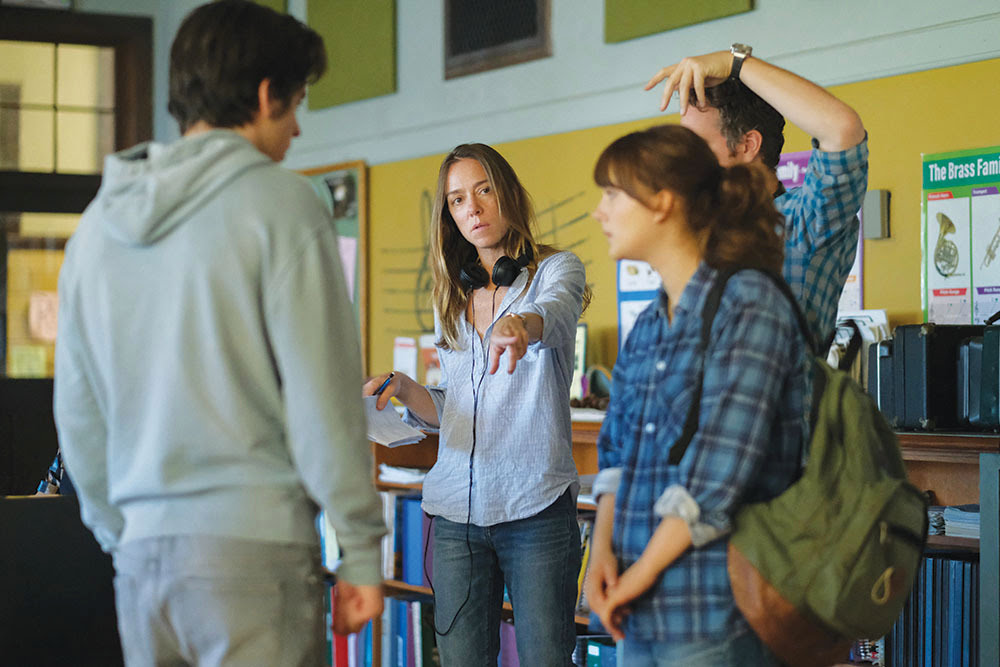
Matlin saw CODA as an all-too-rare opportunity for deaf actors in Hollywood who most often are seen as one-off, guest-starring performers in network acronymic procedurals (e.g., SVU and CSI) or singular side characters in blockbusters like A Quiet Place or Godzilla vs. Kong. Even with Sound of Metal — the Oscar-nominated movie that stars Riz Ahmed, also nominated, as a heavy metal drummer losing his hearing — Matlin “didn’t feel like we were in the forefront.” She adds, “They had a lot of deaf background actors, which is great to see, but only one or two deaf [actors] had more than a few lines.” CODA would allow deaf talent to be front and center, together. “Here we are with three characters carrying the film,” says Matlin, 55. “And we’re carrying it 100 percent authentically.”
CODA marks the feature film debut of Durant, playing the calf sock- and Nike slide-wearing Leo, the endlessly charming if not occasionally overbearing onscreen son of Matlin’s Jackie and Kotsur’s Frank (read THR’s review here). The Minnesota native, 31, was first discovered by a manager through his YouTube page, where he would upload “deaf jokes, vlogs, that kind of thing,” he says. Having not quite found his place, nor declared a major at Gallaudet University — the Washington, D.C. college for the deaf and hard of hearing — Durant flew out to audition for Deaf West, an L.A.-based nonprofit that produces theater inspired by deaf culture, landing a role in a 2012 production of Cyrano.
On the first day of rehearsals, he walked in to find Kotsur, the play’s lead, onstage performing a poem and was thunderstruck. “It was like he was just dancing with poetry,” remembers Durant. “This is the first time I’ve seen a deaf guy who is just nailing this acting thing.”
For his part, the 53-year-old Kotsur — an Arizona-born veteran performer known for his stage work in productions like the Tony-winning Big River — saw himself in the newbie. “I was just there telling him, you know, ‘Keep going. You’re going to find the right people to surround yourself with at the right time.’ ” Since then, Durant, Kotsur and Matlin have crisscrossed paths on multiple projects, finally landing together in Deaf West’s revival of the musical Spring Awakening, which made its way to Broadway in 2015.
“I just really look up to them so much,” offers Durant, earnestly eying his castmates.
Matlin lets the kind sentiment warm the air, before batting, “I paid him to say that.”
“Ten percent, right?”
“Yes, I’m extremely generous.”
Kotsur mugs, “Not me.”
Chemistry, notes Heder, is “the unknown factor that you really hope that your actors will have with each other.” Sharing a community and culture allowed for onscreen relationships that did not require rehearsals. Sitting down to dinner the night before the 30-day Massachusetts shoot, the cast was shocked by how much they already looked and acted like a family.

When stepping onto a new film set for the first time, both Matlin and Kotsur say that they find themselves gauging whether their hearing filmmakers will be amenable to suggestions. With Heder’s self-proclaimed modus operandi — “You don’t know what you don’t know” — the CODA set was one that truly embraced other ideas. “I was not deaf, and I’m not a member of the community,” Heder explains. “I just knew that I needed to have people around me who were empowered and knowledgeable.”
The director reached out to This Close co-creator, deaf actress Shoshannah Stern, for a set visit to her Sundance Channel show, the first TV series created, written by and starring deaf persons, to see how a set can be accommodating to deaf performers and stories. By the time filming began, Heder had been studying American Sign Language for the better part of a year with an instructor, actor Hillary Baack. (Her Tallulah star Elliot Page had made the introduction after working with Baack in the 2013 feature The East.) Signing, Heder notes, “has regionalisms just in the way that a Boston accent would,” which for the purposes of the movie meant that the cast learned the sign for Gloucester, a city with a fishing heritage in Massachusetts, and names of fish native to Cape Ann. Says Kotsur of Heder: “She had done her homework. And not many directors do that. They put you in there, they throw an interpreter next to you, and they kind of work their way through it.”
On the set of CODA, gaffers learned to never backlight actors or stand them against windows so that the actors’ hands did not get lost in the shadows, and the director of photography reframed shots so the signing was clearly visible and the costume department stayed away from fringe and other clothing that could hinder signing. When not shooting, Matlin asked Jones, who is British, to speak with her onscreen American accent because it was easier to understand when it came to reading lips. And when the on-set ASL master, Anne Tomasetti, stepped into the Rossi family living room for the first time, she quickly pointed out that in a deaf household, the couch would be facing the front door. “Suddenly, we were moving furniture around and setting up the living room in a way that you would have sight lines to the entrances and exits,” since anyone who walks in through the door can’t be heard, recalls Heder. “It was like this ‘of course’ moment.” Adds Matlin, “That poor set decorator.”
An overcrowded hair and makeup trailer — where the interpreters were needed alongside the talent and their stylists — was a constant point of contention. “Ask any of the interpreters how many of the makeup artists wanted us to get out of the trailer,” says Jack Jason, Matlin’s longtime interpreter, with a laugh. It was a learning curve they were all able to navigate.
And while CODA is a showcase for deaf performances, it’s also a platform for sign language. “Especially with inauthentic casting, the mistake that is often made is focusing on only the hands in a performance,” says Whetter of past onscreen portrayals of the language. “They forget about other elements of ASL that are equally important,” like body language, facial expressions and eyebrows.
While scripting, Heder first wrote dialogue in English and then met with Alexandria Wailes, the movie’s other ASL master — a role Heder describes as a “dramaturge” who does “not just [do] a translation of the script, it’s a creative interpretation.” Any one word in English could have multiple translations into sign. Together, Wailes and Heder went through the script, 40 percent of which would be in ASL, and talked about the emotion and intention of each piece of dialogue, with Wailes recording reference videos for the signed dialogue. “Oh my God,” Heder thought, watching the process. “I’m going to watch my words.”
Three miles out at sea in federal waters, the CODA cast and crew found themselves spread across a small fleet of seven boats. (“I was relieved that I was not the first person to puke,” says Heder.) Jones, Kotsur and Durant would be practically fishing on camera, with all three having woken up at 2 a.m. during preproduction for lessons with a working New England fisherman. During the shoot, the crew’s shoddy walkie-talkies, coupled with the boats’ loud engines and the trawlers that reel in the nets, made verbal communication nearly impossible. Heder was able to make the setup work by signing across the boats with her assistant director and other crewmembers, many of whom had begun to pick up ASL over the monthlong shoot. “On the first day, we were trying to figure out how this is going to work,” says Kotsur of CODA‘s crew. “By the last day, I forgot they were hearing, and they forgot I was deaf.”

Heder says she often fields some variation of the question: What were the challenges of having deaf actors on your set? “I’m like, ‘Um, the challenges were running fishing boats or having an actor jump off a 40-foot cliff,’ ” she says. Durant offers that when it comes to filmmaking, “There are already so many challenges. [Deafness] is not going to make a big difference.” He adds, “I don’t want [filmmakers] to think that we are this extra burden. We’re not deaf actors. We’re just actors, period.”
Heading into the 2021 Sundance Film Festival, both buyers and sellers expected CODA to be the year’s biggest sale. But how big was a shocker. Filmmakers and sales agents — CAA Media Finance and ICM Partners — decided against prescreening the movie, and roughly three hours after it opened the festival, CODA began fielding offers. While specialty studio labels like Searchlight and Focus Features initially were interested, the fact that multiplexes were then still indefinitely closed proved to be a deal deterrent. In the end, it came down to Amazon and Apple TV+, with the latter winning out with a $25 million bid, the biggest price tag ever for a Sundance film. With the sale, CODA now shares a studio slate with fellow Apple TV+ projects like the Will Smith starrer Emancipation and Martin Scorsese and Leonardo DiCaprio’s Killers of the Flower Moon.
Creatives and activists are hopeful that the headline-grabbing sale and prominent positioning proves the potential profitability of future projects from deaf and disabled talent. Surmises Whetter, “Hollywood loves comps.”
Charlie Chaplin often worked with deaf actor Granville Redmond, communicating on set through sign. 1920s film actor Emerson Romero, who was deaf from a young age, pioneered closed captioning in feature films. Silent film-era Hollywood was more welcoming for deaf performers, who were naturally adept at nonverbal communication, but the advent of sound in movies began the long fight for accessibility. “Ever since then, deaf people have been trying to get back in,” says Whetter.
Hollywood has a storied history of awarding actors for their work playing characters with disabilities. In the Oscar’s best actor category alone, there is Daniel Day-Lewis for My Left Foot, Eddie Redmayne in The Theory of Everything, Colin Firth for The King’s Speech and Jamie Foxx for Ray — among many, many others. Underscoring this ableism, the 2021 Oscars stage was the first to feature a ramp.
Though the CDC says one in four American adults have a disability, including deafness — representing a $1 billion market segment, per the Census Bureau — only 3.5 percent of series regular characters in the 2020-21 TV season had a disability. This is up from 3.1 percent in the 2019-20 season, according to GLAAD’s annual report on inclusion across communities called “Where We Are on TV.” The Annenberg Inclusion Initiative, which began tracking disability in feature films in 2015, found that only 2.3 percent of all speaking characters across the 100 top-grossing films of 2019 were depicted with a disability — but those characters were not necessarily played by performers who have the disability they are portraying. And nearly all onscreen portrayals of people with disabilities in media are white.
Research is integral to Hollywood diversity efforts, offering definitive benchmarks on inclusion. But qualitative and quantitative studies on disability representation in Hollywood are lacking when compared with studies that track the gender and racial progress in the industry. Individuals may not want to self-identify for fear of discrimination, and companies are wary of inquiries regarding disabilities among employees for fear of possible HIPAA violations. “We need evidence,” says Anita Hollander, the national chair of SAG-AFTRA’s performers with disabilities committee. “We are saying [to our actors], ‘Do not hide, this is no longer the time to do that. We are in a different time.’ “
Within the industry, there are multiple systemic barriers for disabled talent. Union memberships are predicated on talent having consistent employment, but people with disabilities historically have had fewer opportunities for stable work. “The unions really need to step up,” says Matlin. “Deaf actors who don’t have that many opportunities to work in the first place are now losing their insurance. There’s no accommodation being made for that.”
Still, disabled creatives and activists are aligned in the belief that the past year— which saw agencies, networks, and studios commit to more inclusion and diversity efforts following summer 2020’s Black Lives Matter protests— has seen gains in representation and inclusion. After years of lobbying by Matlin and others, the 2021 Oscars season was the first in which the Academy required that all For Your Consideration screeners include closed-captioning. And Sundance’s first virtual iteration also became its most accessible, with attendees freed from having to traverse icy streets for screenings, and the inclusion of closed-captioning on every film.
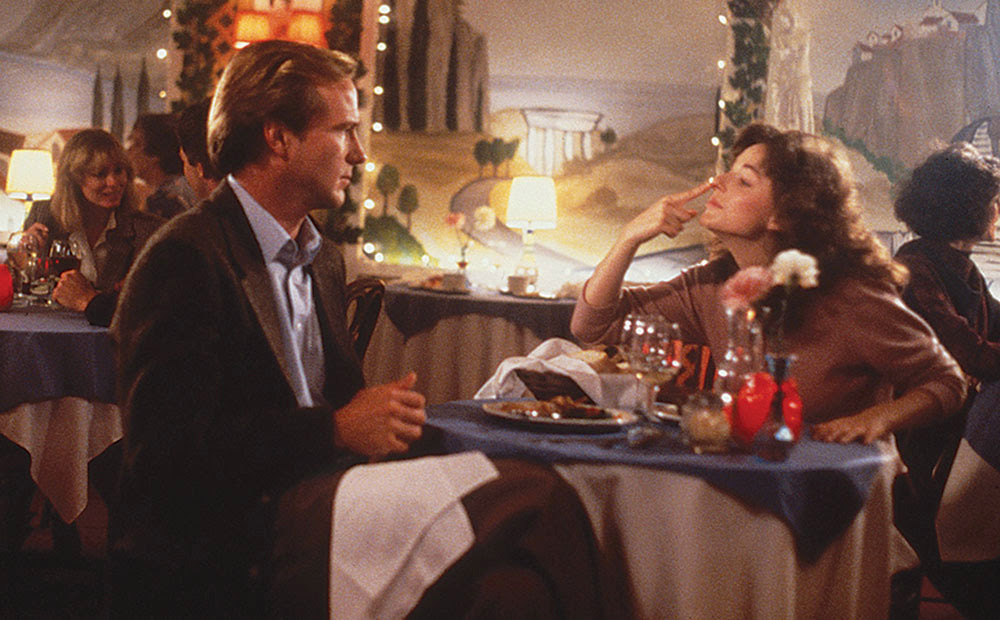
RespectAbility, with its mission of combating stigmas for people with disabilities, now offers consulting services to top industry players, including Netflix, Disney and WarnerMedia. Thus far this year, the organization has consulted on 160 projects, after 70 in 2020 and a dozen in 2019. In a recent study conducted with Nielsen, RespectAbility found that the volume of media content inclusive of disability has increased by more than 175 percent in the past decade when compared with the previous 10 years. Pixar’s most recent release, Luca, featured a character with a congenital limb difference, for which the studio consulted Crip Camp director and Oscar nominee Jim LeBrecht, who himself is working on a series adaptation of the YA novel Good Kings Bad Kings that is set in a residential facility for teens with disabilities. Under her overall deal with Apple TV+, Heder is set to direct a biopic about pioneering disability rights advocate Judy Heumann.
In the second season of Star Wars series The Mandalorian, Kotsur can be seen onscreen as a Tusken Raider, one of the inhabitants of Tatooine who have been canon since 1977’s A New Hope. An AD who had taken ASL classes (according to Modern Language Association, ASL is the third-most-studied language in American universities) suggested that the production reach out to deaf talent to consult on the character that was scripted using a sign language to communicate with the show’s titular bounty hunter. Kotsur, a lifelong Star Wars fan, was brought in and developed a sign-based vocabulary — dubbed Tusken Sign Language — to play the character. It seems that when it comes to disability inclusion, the question Hollywood is more frequently asking is no longer why but how.
On CODA’s last day of filming, during their final scene, Matlin looked over to Durant and saw he was crying. She recognized the feeling as one she’d had three decades earlier, finishing Children of a Lesser God. “I understood completely,” she says. “I knew he knew it was over. And that he was grateful to have had the opportunity to do this job.” Says Durant, “It was hard to let go.” For months after production, Kotsur refused to cut the long beard and hair he had grown for the movie.
Wrapped up in the pride of accomplishing something unprecedented, and the heartache of saying goodbye, also was an underlying worry of not knowing when another project like CODA will come along again. “It was a lot of years of struggle, feeling almost like I was burned out. I didn’t think something like this was ever going to happen,” says Kotsur. “So we’ll just have to see what comes next.”
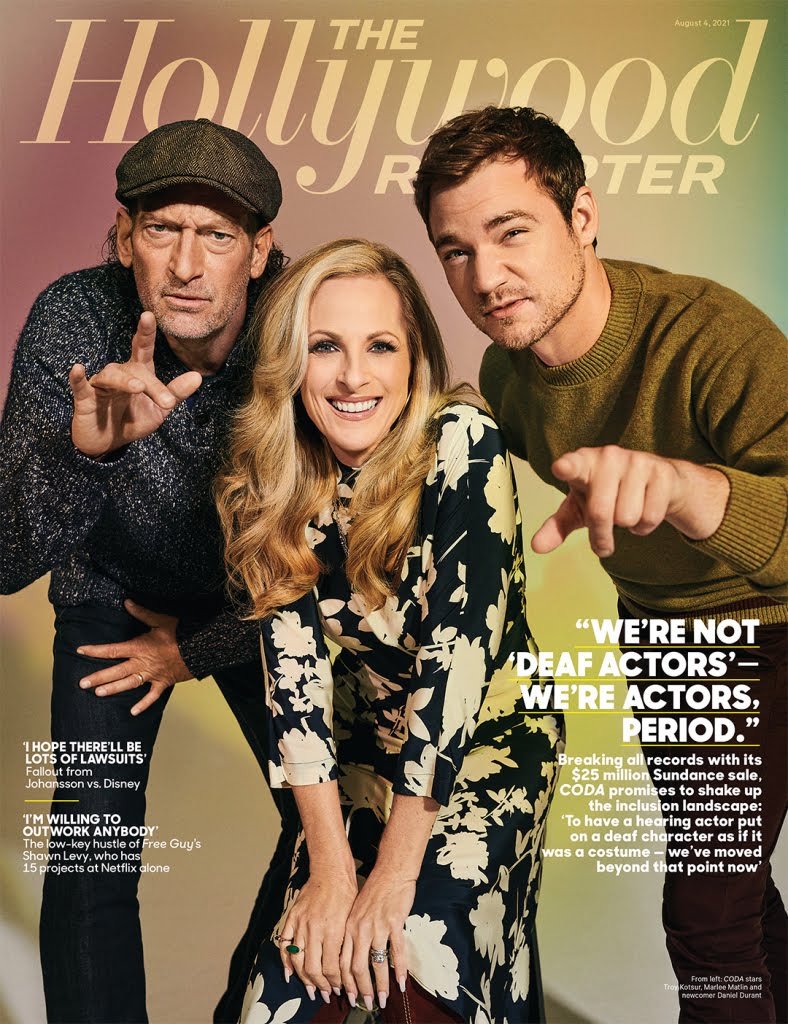
About This Article:
A Life Worth Living has copied the content of this article under fair use in order to preserve as a post in our resource library for preservation in accessible format. Explicit permission pending.
Link to Original Article: https://www-hollywoodreporter-com.cdn.ampproject.org/c/s/www.hollywoodreporter.com/movies/movie-features/coda-film-representation-1234991797/amp/

